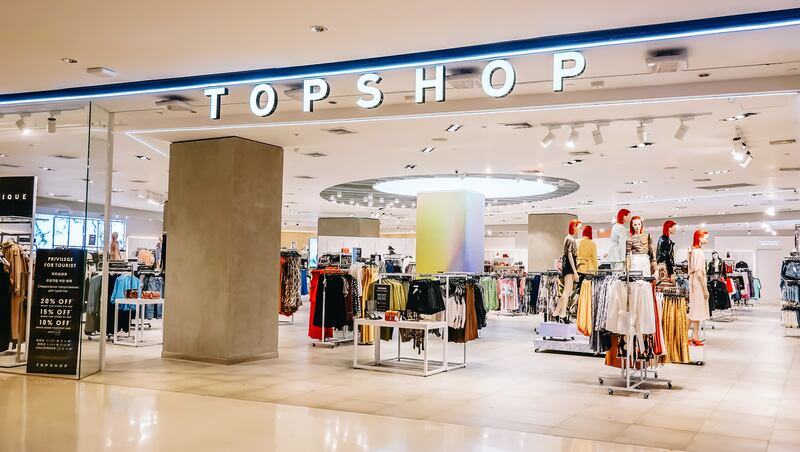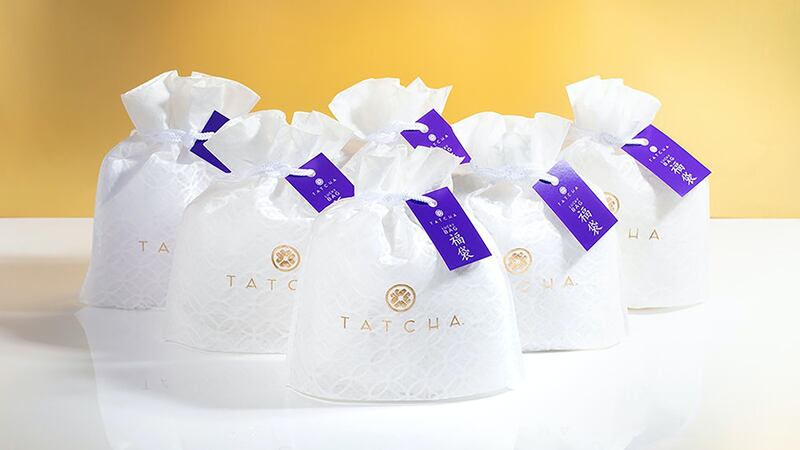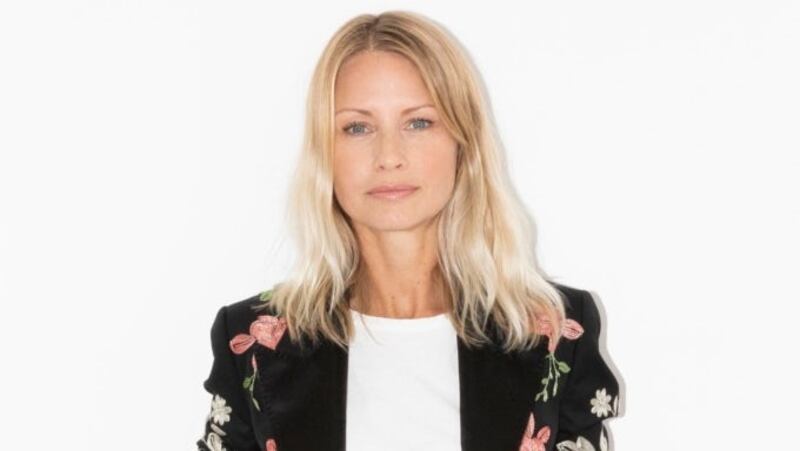
The Business of Fashion
Agenda-setting intelligence, analysis and advice for the global fashion community.

Agenda-setting intelligence, analysis and advice for the global fashion community.

Hello BoF Professionals, your exclusive 'This Week in Fashion' briefing is ready, with members-only analysis on the key topic of the week and a digest of the week's top news.
For Silicon Valley, Mary Meeker is a seer. The former Wall Street analyst became famous for her ability to accurately predict the future performance of internet stocks. Now a venture capitalist, her Internet Trends Report, first published in 1995, is considered gospel by technology executives the world over, who view her insights on changing consumer behaviour as sign posts on where to take their businesses next.
Meeker and her team pore over millions of data points each year in order to be able to synthesise the most important changes in and around technology. And this time their report spans 333 slides unpacking the state of the internet and associated consumer shifts.
These insights might have once been most relevant to the tech companies working alongside Meeker in Silicon Valley, where she has started her own fund Bond Capital, which has already raised $1.25 billion, after leaving troubled venture firm Kleiner Perkins. But today the internet is increasingly the operating system on which business runs and every company is a technology company.
ADVERTISEMENT
In fashion, the way products are created and consumed has changed significantly over the past 100 years, but the industry’s leaders are waking up to the fact that success in the current market requires a willingness to further evolve if not disrupt existing models in light of the big shifts brought about by the internet.
Here are nine key observations from Meeker’s report that every fashion leader should be thinking about:
1. More than half of the people in the world are internet users. So it's no surprise that user growth is slowing, although it remains steady. What's important to know is that the amount of time users spend on the internet is growing — which means increased commerce opportunities. What's more, the biggest growth in users will come from the Asia-Pacific region, particularly China, a key area of sales growth for fashion brands.
2. YouTube and Instagram are the platforms gaining the most share of time spent on the internet. But social media usage is decelerating overall. This bodes well for visual, video-driven applications and platforms like TikTok, a new challenger to Instagram and Snapchat.
3. Fashion brands should not sleep on voice-activated selling. Over 100 million Amazon Alexa's have been sold, according to data released by the company at the end of 2019. But more importantly, the number of third-party companies plugging into Alexa have increased exponentially. (For instance, users can check their Capital One bank balance, or order Starbucks coffee ahead of time.) While Amazon's voice-controlled camera, Echo Look, failed to make significant waves when it launched in 2017, brands are using AI to offer users style advice and make purchasing decisions.
4. E-Commerce is still growing, but so is physical retail. However, e-commerce did grab a little more market share — it now makes up 15 percent of retail sales in the US — indicating that the dynamics between the two channels will continue to shift. While physical retail remains important to fashion, brands will need to think harder about how they use those spaces to drive consumer engagement and conversion.
5. Digital advertising continues to dominate. However, it's changing. The decline of print may not be surprising, but the rise of online video has begun to deeply affect traditional television advertising as well. Advertising spending on mobile and desktop far exceeds television, and internet advertising spending was up 22 percent last year. But revenue on the leading platforms is decelerating, with Amazon, Twitter, Pinterest and others gaining share from Facebook and Google.
6. Customer acquisition costs are rising. It's never been more expensive to acquire customers online, which explains why so many digital-first brands are opening up physical retail stores. But there is a way to make digital marketing work. Meeker's key insight is that "customer acquisition costs can't exceed lifetime value for very long." Brands need to come up with an effective marketing plan that is also efficient. If the product is good, the customer will be happy and recommend it to others. Stitch Fix says that every item they sell is "based on recommendations." The challenge for brands is to avoid the crash-and-burn of overspending on customer acquisition, especially when many of those customers will never return.
ADVERTISEMENT
7. Consumers are increasingly part of the conversation before a product is even designed. One of the most interesting companies Meeker highlights is China's Pinduoduo, a social shopping app that employs a "consumer-to-manufacturer" model, which means that it surveys its audience before making requests to upstream providers, like clothing manufacturers. In the traditional model, brands and manufacturers dictate, and consumers react, meaning that it's difficult to predict what will perform well. Companies like Glossier, WhoWhatWear and StitchFix are already working in this new way by culling audience data, but it has yet to infiltrate high fashion.
8. Image creation and sharing continues to ramp up. Humans have always told stories through images, and platforms like Snapchat and Instagram have made that even easier to do in a beautiful, effective way. For brands, image-based communication, enabled by computer vision and artificial intelligence, will become increasingly important.
9. Personalisation is key, but it's less about products and more about service. While personalised products remain somewhat of a novelty, personalised service is a key conversion driver. That's because data — combined with artificial intelligence — can help brands increase customer satisfaction. In fact, 91 percent of customers prefer brands that provide personalised offers and recommendations.
THE NEWS IN BRIEF
FASHION, BUSINESS AND THE ECONOMY

A Topshop store | Source: Shutterstock
Landlords vote to approve rescue plan for Philip Green's Arcadia. Topshop, Miss Selfridge and other Arcadia fashion chains will survive after landlords voted Wednesday by a slim margin to accept the troubled retailer's plan to lower rents and close dozens of stores. Arcadia said it secured the required three-quarters majority support for its company voluntary arrangements, or CVAs. The plans save Arcadia from entering administration, where its seven chains might have been sold off or liquidated.
Ted Baker shares sink after "extremely difficult" start to year. The fashion retailer has sunk deeper into trouble after it warned that underlying profit for the year would likely be at least £10 million below analysts' estimates after an "extremely difficult" start to 2019. Shares, which fell 43 percent last year and another 14 percent before Tuesday's opening, were down by a quarter in the first few minutes of trading after it blamed promotions and unseasonable weather in North America, which accounts for a third of its revenue.
ADVERTISEMENT
Hudson's Bay posts wider-than-expected loss. The Canadian department store operator posted a wider-than-expected loss and a 3.3 percent fall in first-quarter revenue as it closed some stores and sales at its Lord & Taylor unit fell. The owner of Saks Fifth Avenue is evaluating a C$1.74 billion ($1.3 billion) go-private cash offer from its executive chairman and other shareholders. The struggling retailer has been shutting its underperforming shops to cut costs and exploring strategic alternatives, such as a sale or merger of its department store Lord & Taylor.
Chanel looks to green technology investments. The French luxury house has taken a minority stake in a green chemistry firm that's exploring ways silk could replace chemicals used in clothing manufacturing — the latest move in a growing emphasis on tackling fashion's climate issues at Chanel. Boston-based Evolved by Nature has developed a natural, silk-based alternative to the harsh and toxic chemicals currently used to create many high-performing textiles. The company's patented activated silk can reduce the pilling in cashmere, or enhance the performance characteristics of nylon and polyester.
Lululemon beats quarterly estimates and raises full-year forecast. The Canadian athletic apparel maker's first-quarter profit and revenue beat analyst expectations, as efforts to boost sales at its stores and online investments paid off. Lululemon raised its full-year profit and revenue forecasts, and predicted earnings per share between $4.51 and $4.58, higher than its previous estimate of $4.48 to $4.55. Total comparable sales rose 14 percent, while analysts had expected a rise of 11.6 percent.
Inditex says sales on track as profitability improves. The Zara owner reported a better gross margin and maintained its sales forecast for this year, quelling analyst concerns that the goal may be too challenging. The gross margin widened 60 basis points to 59.5 percent. The company maintained its forecast for 4 to 6 percent like-for-like growth this year. These are probably the last results to be announced by Chief Executive Pablo Isla, with Carlos Crespo set to replace him after the company's annual shareholder meeting next month. The stock has risen 13 percent this year.
Lanvin's Chinese owner seeks investors for fashion unit. Fosun International Ltd is seeking to sell a stake in its fashion unit to outside investors as part of plans to revamp the business. Fosun Fashion Group, whose portfolio includes French luxury brand Lanvin, is targeting to raise more than $100 million. It has started gauging interest from potential investors including several Asian family offices. Proceeds will be used to help expand the brands and improve their profitability, and Fosun Fashion is considering a Paris IPO in several years among other options, according to people familiar with the matter.
Britain's Boohoo bucks subdued retail market with stellar sales. The British online fashion group, which sells own-brand clothing, shoes, accessories and beauty products, saw robust sales growth in its latest quarter. Group revenue rose 39 percent to £254.3 million ($323.5 million) in the three months to May 31. The group's UK sales were up 27 percent and international sales were up 56 percent. Boohoo's shares, up 42 percent so far this year, closed Tuesday at 230.1 pence, valuing the business at £2.67 billion ($3.4 billion).
THE BUSINESS OF BEAUTY

Tatcha mystery bags | Source: Courtesy
Unilever buys Tatcha skincare. The world's largest cosmetics companies have been acquiring upstart brands in recent years as they search for the next big hit, often picking labels that attract younger, trendier shoppers. Unilever agreed to buy skincare brand Tatcha, which makes creams based on a foundation of green tea, rice and algae, seeking to ride a wave of demand for Asian-influenced cosmetics. Tatcha was founded a decade ago in San Francisco and has an innovation centre in Japan. A price was not disclosed.
PEOPLE

Holli Rogers | Source: Courtesy
Farfetch names Holli Rogers chief brand officer and chief data officer. The e-commerce platform has announced a series of changes to its executive team, including the appointment of Kshitij Kumar as the company's first chief data officer, and Holli Rogers as chief brand officer. Kumar joins Farfetch from Zalando, where he was vice-president of data solutions, while Rogers, who was previously named chief fashion officer at the company, will continue to additionally serve as chief executive of Browns. Farfetch has also said that Chief Marketing Officer John Veichmanis will be stepping down after almost four years at the company.
Esquire's site director promoted to editor-in-chief. Michael Sebastian has been appointed to succeed Jay Fielden, who stepped down as editor-in-chief of Esquire in May 2019, with immediate effect. Sebastian, who was previously digital director of Esquire, will continue to oversee the publication's digital properties. Hearst has also promoted Esquire Fashion Director Nick Sullivan to the newly created role of creative director of the magazine.
MEDIA AND TECHNOLOGY
Alibaba files for a Hong Kong mega-listing. The Chinese e-commerce giant has filed confidentially for a Hong Kong listing, moving closer to what is potentially the city's biggest share sale since 2010. Alibaba filed a stock listing application with the exchange this week without the need for financial disclosures. It is said to have picked China International Capital Corp and Credit Suisse Group AG as lead banks. The offering from China's largest company could raise as much as $20 billion, though Alibaba hasn't finalised its fundraising target.
Hodinkee announces partnership with Hearst Fujingaho to launch Hodinkee.jp. Hodinkee has made its first foray outside of the United States with the launch of a Japanese language edition launched in partnership with Hearst Fujingaho, the Japanese subsidiary of global publisher Hearst. Hodinkee.jp will combine translations of content produced by Hodinkee in the US along with unique content specific to the Japanese market. Unlike the US site, which sells 10 watch brands online, the Japanese version will not have an e-commerce component.
Goodwill, the original thrift store, goes digital. The nonprofit, one of the stalwarts of the secondhand shopping economy, wants a bigger piece of the digital resale market. Goodwill has teamed up with OfferUp, an American mobile marketplace for buyers and sellers, to list its high-value merchandise on the platform in the hopes that Goodwill can nab some online sales that are helping fuel the $24 billion resale industry.
BoF Professional is your competitive advantage in a fast-changing fashion industry. Missed some BoF Professional exclusive features? Click here to browse the archive.
The nature of livestream transactions makes it hard to identify and weed out counterfeits and fakes despite growth of new technologies aimed at detecting infringement.
The extraordinary expectations placed on the technology have set it up for the inevitable comedown. But that’s when the real work of seeing whether it can be truly transformative begins.
Successful social media acquisitions require keeping both talent and technology in place. Neither is likely to happen in a deal for the Chinese app, writes Dave Lee.
TikTok’s first time sponsoring the glitzy event comes just as the US effectively deemed the company a national security threat under its current ownership, raising complications for Condé Nast and the gala’s other organisers.